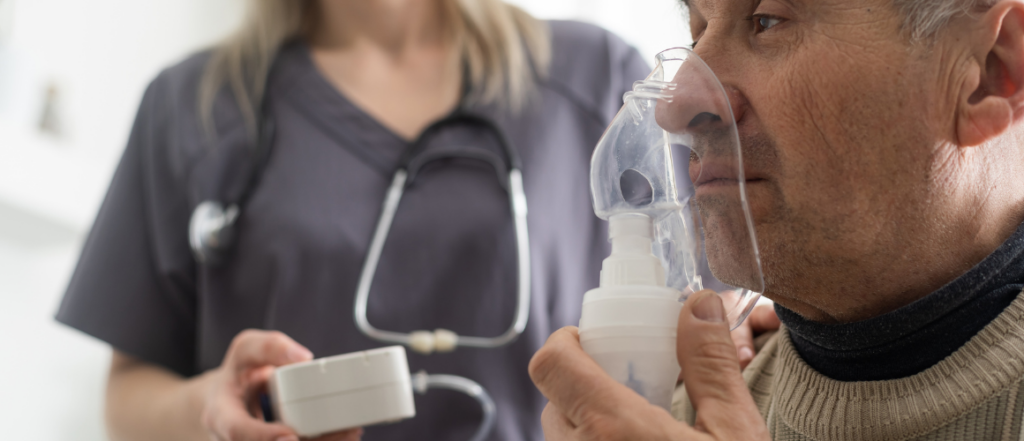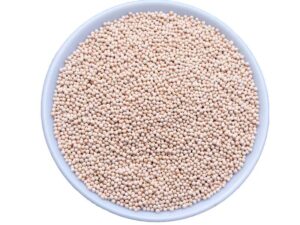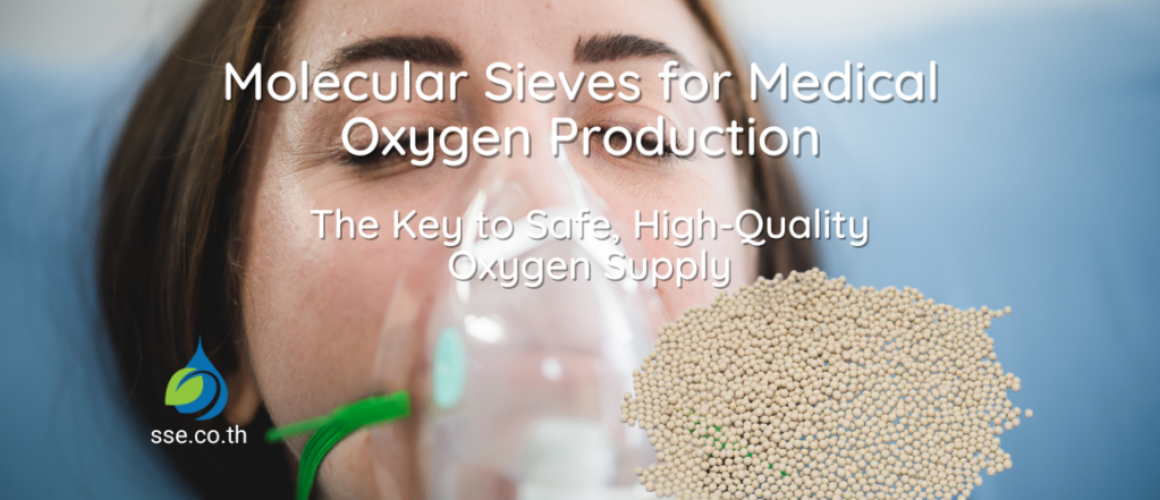Molecular Sieves for Medical Oxygen Production: The Key to Safe, High-Quality Oxygen Supply


| Key Takeaways | Details |
|---|---|
| Role in Oxygen Purity | Ensures consistent oxygen purity essential for safe and effective patient care |
| Benefits of Molecular Sieves in PSA Systems | Efficient nitrogen adsorption enables high oxygen output |
| Applicable Settings | Used in hospital oxygen systems and portable concentrators |
| Technical Metrics | High adsorption capacity and temperature resilience extend operational lifespan |
| Future Innovations | Newer molecular sieve materials enhancing efficiency and sustainability |
Table Of Contents
Introduction
Molecular sieves for medical oxygen production play a crucial role in ensuring oxygen purity and consistency, meeting the high demands of healthcare settings where precision and reliability are paramount. Whether we’re considering hospital-grade oxygen generators or portable concentrators for home care, molecular sieves are central to oxygen purification, setting the standard for quality and safety in healthcare applications. Let’s explore how molecular sieves function within these systems, why they’re critical for healthcare, and the latest advancements supporting oxygen production in medical environments.


What Are Molecular Sieves and Their Role in Oxygen Production?
| Key Takeaway | Details |
|---|---|
| Definition | Molecular sieves are engineered to adsorb specific molecules, such as nitrogen, from air. |
| Purpose in Oxygen Production | They facilitate the concentration of oxygen by adsorbing nitrogen in PSA oxygen systems. |
| Efficiency | Highly selective adsorption helps ensure high oxygen output purity and reliability. |
Molecular sieves are highly specialized materials capable of separating specific molecules from mixtures. In medical oxygen production, they’re specifically engineered to target and adsorb nitrogen, allowing the system to deliver a high-purity oxygen stream. Molecular sieves are often incorporated in pressure swing adsorption (PSA) systems, which effectively isolate oxygen from ambient air by selectively adsorbing nitrogen under pressure, then releasing it to allow oxygen to flow through.
This highly efficient process allows oxygen generators to meet medical-grade standards reliably. In PSA oxygen concentrators, molecular sieves are often paired with compressors and filters to ensure consistent oxygen purity, essential in healthcare settings where even minor fluctuations can impact patient outcomes. Molecular sieves are thus foundational in enabling PSA systems to achieve the high purity standards expected in medical equipment.
Why Oxygen Purity Matters in Healthcare
| Key Takeaway | Details |
|---|---|
| Importance of Purity | Medical-grade oxygen purity is critical for patient safety and treatment efficacy. |
| Regulatory Standards | Oxygen purity levels are regulated to maintain 90-96% for therapeutic use. |
| Health Implications | Impurities can negatively affect patient outcomes, especially in critical care. |
In healthcare, oxygen purity is non-negotiable. Medical-grade oxygen—typically at 90-96% purity—is essential for safe and effective treatment, especially for patients who rely on oxygen therapy to manage chronic conditions like COPD, or in acute cases requiring supplemental oxygen. Impurities or lower oxygen concentrations can reduce treatment effectiveness and pose serious risks to patient safety.
This is where molecular sieves for medical oxygen production excel. Their design ensures that nitrogen and other impurities are captured efficiently, yielding oxygen that meets stringent purity standards. In addition to promoting safer outcomes, high-purity oxygen supports more precise dosages and improves the reliability of medical equipment. Medical applications, particularly those involving PSA oxygen concentrators, demand these stringent standards to ensure every breath is pure and beneficial.
How Molecular Sieves Support PSA Oxygen Concentrators
| Key Takeaway | Details |
|---|---|
| PSA Process | Uses pressure changes to adsorb nitrogen, leaving high-purity oxygen. |
| Sieve Functionality | Molecular sieves enhance PSA efficiency by quickly adsorbing nitrogen molecules. |
| System Performance | Effective sieves optimize oxygen output while reducing energy and operational costs. |
PSA technology is the heart of most medical oxygen concentrators, and molecular sieves make it possible. Here’s how: PSA systems operate by drawing in atmospheric air, compressing it, and passing it through a molecular sieve bed that adsorbs nitrogen molecules. This allows only oxygen molecules to continue flowing through, providing a high-purity oxygen output for medical use.
The process repeats cyclically, with molecular sieves undergoing desorption when the pressure is lowered, releasing nitrogen and recharging for the next cycle. This continuous adsorption-desorption cycle ensures an uninterrupted oxygen supply while maintaining purity. Molecular sieves’ high nitrogen selectivity and rapid adsorption make PSA systems extremely efficient and compact, allowing concentrators to be portable without sacrificing oxygen quality.
Types of Molecular Sieves for Medical Oxygen Production
| Key Takeaway | Details |
|---|---|
| 13X and MSOX Sieves | Common types used for oxygen production, with optimized adsorption characteristics. |
| Particle Size | The sieve size impacts adsorption speed and overall concentrator efficiency. |
| Designed for Purity | Specialized sieves ensure consistent oxygen purity required in medical applications. |
Different molecular sieves serve unique roles in PSA systems for medical oxygen. Zeolite 13X and lithium-based sieves are particularly effective due to their superior nitrogen adsorption capacity, high resistance to heat, and exceptional durability. Each type offers unique benefits:
- Zeolite 13X: Known for its large surface area and high adsorption capacity, making it highly effective in medical oxygen concentrators.
- Lithium-based Molecular Sieves: These advanced materials provide faster nitrogen adsorption and even higher purity, ideal for portable oxygen concentrators that need to maintain compact size and efficiency.
Choosing the right molecular sieve is critical for achieving optimal performance and meeting regulatory standards for medical-grade oxygen. Each sieve type comes with specific properties tailored to support oxygen purity and concentrator efficiency, providing professionals with reliable options suited to a variety of applications.
Molecular Sieves Designed for Oxygen Production: The MSOX Series
For medical oxygen production, molecular sieves need to deliver high oxygen purity with efficiency and reliability. SSE’s MSOX series is crafted specifically for this purpose, featuring advanced adsorption technology to ensure sustained oxygen generation for both centralized systems and portable oxygen concentrators. Designed to meet stringent healthcare standards, the MSOX series supports PSA systems, capturing nitrogen effectively to yield medical-grade oxygen.


Explore our MSOX Molecular Sieves Series for Oxygen Generation to learn more about how these sieves support efficient and safe oxygen delivery.
Real-World Applications of Molecular Sieves in Healthcare
| Key Takeaway | Details |
|---|---|
| Portable Concentrators | Used in patient mobility, offering a reliable source of pure oxygen. |
| Hospital Systems | Essential in centralized oxygen generation systems for hospitals and clinics. |
| Home Healthcare | Increasingly used for in-home oxygen therapy, enhancing patient convenience. |
Molecular sieves are now a cornerstone of medical oxygen supply, present in diverse healthcare applications from hospital oxygen systems to personal concentrators for home use. For instance, hospitals rely on molecular sieves in centralized oxygen generators to deliver pure oxygen throughout patient care facilities. Meanwhile, the rising demand for home-based oxygen concentrators, often driven by chronic respiratory conditions, has spurred the development of portable devices equipped with efficient PSA systems and molecular sieves.
In emergency settings, portable concentrators equipped with molecular sieves ensure immediate access to oxygen, even in environments without direct access to hospital oxygen supplies. This flexibility, made possible by molecular sieve technology, highlights its role in bridging care gaps and making life-saving oxygen available in various healthcare settings.
Technical Metrics That Highlight the Value of Molecular Sieves
| Key Takeaway | Details |
|---|---|
| Adsorption Rate | Measures the sieve’s efficiency in capturing nitrogen, affecting oxygen purity. |
| Capacity | Determines how much nitrogen can be adsorbed before regeneration, impacting system longevity. |
| Temperature Resilience | Ensures stability and consistent performance under varying environmental conditions. |
Several technical metrics underscore why molecular sieves are so valuable in oxygen concentrators. Adsorption capacity, nitrogen selectivity, and thermal resilience are just a few factors that determine their performance. Here’s a closer look:
- Adsorption Capacity: High adsorption capacity allows molecular sieves to effectively capture nitrogen molecules, even in compact concentrators, maximizing oxygen output.
- Nitrogen Selectivity: High nitrogen selectivity means molecular sieves can capture nitrogen even at low concentrations, helping maintain oxygen purity levels.
- Thermal Stability: Molecular sieves must withstand the heat generated by PSA cycles, so thermal resilience ensures they continue performing under demanding operational conditions.
These metrics are critical in delivering safe, medical-grade oxygen while prolonging the lifespan of PSA systems. The right molecular sieve offers durability, consistency, and quality—key qualities for high-demand medical environments.
Enhancing Molecular Sieve Efficiency in Medical Oxygen Production
In medical oxygen production, ensuring optimal sieve performance is crucial to meet purity standards. Various factors, such as temperature control and nitrogen adsorption rates, significantly impact molecular sieve efficiency. A recent study offers insights into these variables, emphasizing their effect on overall system performance and oxygen purity levels. For a deeper understanding of these influential factors, refer to this Study on Influencing Factors of Molecular Sieve Oxygen-Production System.
Innovations and the Future of Molecular Sieves in Medical Equipment
| Key Takeaway | Details |
|---|---|
| Advanced Zeolites | New materials offer improved adsorption for higher oxygen purity and efficiency. |
| Energy Efficiency | Innovations aim to reduce power consumption in PSA concentrators. |
| Compact Solutions | Smaller, more efficient sieves enable portable medical devices for home and remote care. |
The future of molecular sieves in medical oxygen production is promising, with innovations aimed at enhancing efficiency and reducing environmental impact. Recent advancements in molecular sieve materials have produced sieves with increased adsorption rates and greater durability, allowing smaller devices to deliver medical-grade oxygen more effectively.
Some researchers are exploring sieves with even greater nitrogen adsorption properties, which could enable concentrators to function efficiently with minimal maintenance, a valuable asset in remote and home healthcare. As medical-grade oxygen demand grows, continued innovation in molecular sieve technology promises to support more sustainable and efficient oxygen delivery solutions.
Frequently Asked Questions
What are molecular sieves, and how are they used in medical oxygen production?
Molecular sieves are materials engineered to separate gases. In oxygen production, they adsorb nitrogen, allowing oxygen to pass through and reach high purity levels essential for medical use.
Why is oxygen purity important in healthcare?
Oxygen purity is critical in healthcare to ensure patient safety and effective treatment. Medical-grade oxygen typically needs to be over 90% pure to meet therapeutic standards.
How do molecular sieves work in PSA oxygen concentrators?
In Pressure Swing Adsorption (PSA) concentrators, molecular sieves selectively adsorb nitrogen from the air, allowing concentrated oxygen to be delivered.
What types of molecular sieves are used for medical oxygen?
Commonly used types include zeolite-based sieves like the MSOX series, which are engineered for effective nitrogen adsorption and high oxygen purity.
Can molecular sieves be used in portable oxygen concentrators?
Yes, molecular sieves are integral to portable oxygen concentrators. They help ensure a steady supply of medical-grade oxygen in a compact device suitable for home or travel.
What is the typical oxygen purity achieved in medical oxygen generators?
Medical oxygen generators typically achieve oxygen purity between 90-96%, meeting strict healthcare standards for safe patient use.
How do molecular sieves affect the efficiency of oxygen generators?
Molecular sieves improve the efficiency by optimizing nitrogen adsorption, which increases oxygen concentration, reduces waste, and improves overall generator performance.
What role does nitrogen adsorption play in oxygen production?
Nitrogen adsorption by molecular sieves is crucial in isolating oxygen. The sieves capture nitrogen molecules, enabling a higher purity oxygen output.
How often do molecular sieves need replacement in oxygen concentrators?
The lifespan of molecular sieves varies, but they generally last several years under regular use, depending on the unit’s design and maintenance.
What makes molecular sieves ideal for PSA oxygen generation?
Their selective adsorption properties, thermal stability, and ability to perform in cyclic environments make them ideal for the PSA process in medical oxygen production.
Are there specific purity standards for oxygen produced with molecular sieves?
Yes, medical-grade oxygen produced through PSA must adhere to stringent purity standards, typically 90% or higher, to be suitable for therapeutic use.
Can molecular sieves maintain purity under varying environmental conditions?
High-quality molecular sieves like those in the MSOX series are designed to maintain adsorption capacity across different temperatures and pressures.
What are some technical benefits of molecular sieves in oxygen concentrators?
They ensure efficient nitrogen removal, consistent oxygen purity, extended system life, and low energy consumption, all of which are critical in medical settings.
How does a molecular sieve help extend the life of oxygen equipment?
By efficiently adsorbing nitrogen and minimizing contamination, molecular sieves reduce the wear on the oxygen generator, extending its functional life.
Why are molecular sieves preferred over other desiccants in medical oxygen production?
Their unique adsorption characteristics, specifically for nitrogen, and ability to sustain repeated cycles without degradation make them superior to other desiccants.
What technical metrics define a good molecular sieve for medical use?
Key metrics include adsorption capacity, thermal stability, cycle durability, and selectivity for nitrogen over oxygen to ensure optimal medical-grade oxygen purity.
Are molecular sieves used in both large-scale and portable medical oxygen systems?
Yes, they are versatile and can be used in both centralized hospital systems and portable units, adapting to the oxygen demands of each system.
How does the PSA process differ from other oxygen production methods?
The PSA process selectively adsorbs nitrogen at different pressure levels, offering a continuous, efficient method to produce high-purity oxygen, unlike cryogenic or membrane separation methods.
Are there advancements in molecular sieve technology for oxygen generation?
Yes, ongoing advancements focus on improving adsorption efficiency, reducing energy consumption, and enhancing durability, especially for medical applications.
Where can I find more information on molecular sieves for oxygen production?
For more information, check out our Comprehensive Guide to Molecular Sieves and explore our range of Molecular Sieves for Oxygen Generation.
Conclusion: The Critical Impact of Molecular Sieves in Medical Oxygen Systems
Molecular sieves for medical oxygen production play an indispensable role in delivering reliable, pure oxygen across various healthcare applications, from centralized hospital systems to portable home concentrators. As demand for safe, high-quality oxygen continues to rise, molecular sieves will remain at the forefront of healthcare innovation, supporting patients and medical professionals alike.
For those seeking more information or specialized molecular sieves for medical oxygen applications, we invite you to explore Molecular Sieves for Oxygen Generation and check out related articles on The Science of PSA Oxygen Concentration and Choosing Zeolite Molecular Sieve for Oxygen Generators.
ขอบคุณที่ใช้เวลาอ่านบทความของเราเกี่ยวกับการป้องกันความชื้น ทางเราหวังว่าท่านจะได้รับข้อมูลที่มีคุณค่าและเป็นประโยชน์ ทางเรายินดีให้บริการการปรึกษาฟรีเพื่อพูดคุยเกี่ยวกับความต้องการของท่านและให้คำแนะนำเกี่ยวกับวิธีการป้องกันความชื้นที่กำหนดเฉพาะสำหรับคุณ โปรดติดต่อเราที่ 0858124188 เพื่อนัดหมายการปรึกษาหรือเยี่ยมชมร้านค้าของเราเพื่อค้นหาผลิตภัณฑ์ที่ช่วยป้องกันสินค้าของคุณจากความเสียหายจากความชื้น ทางเราหวังว่าจะได้รับข่าวสารจากท่านเร็วๆนี้
